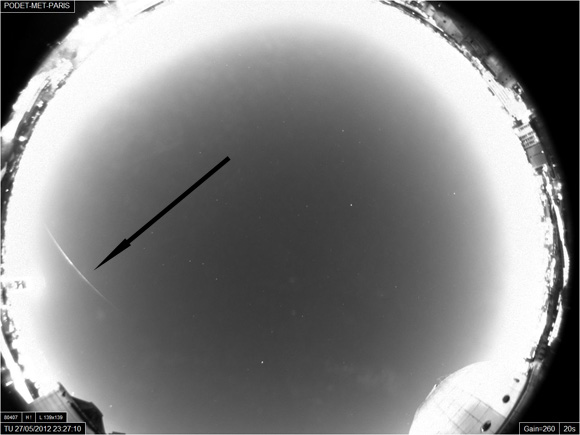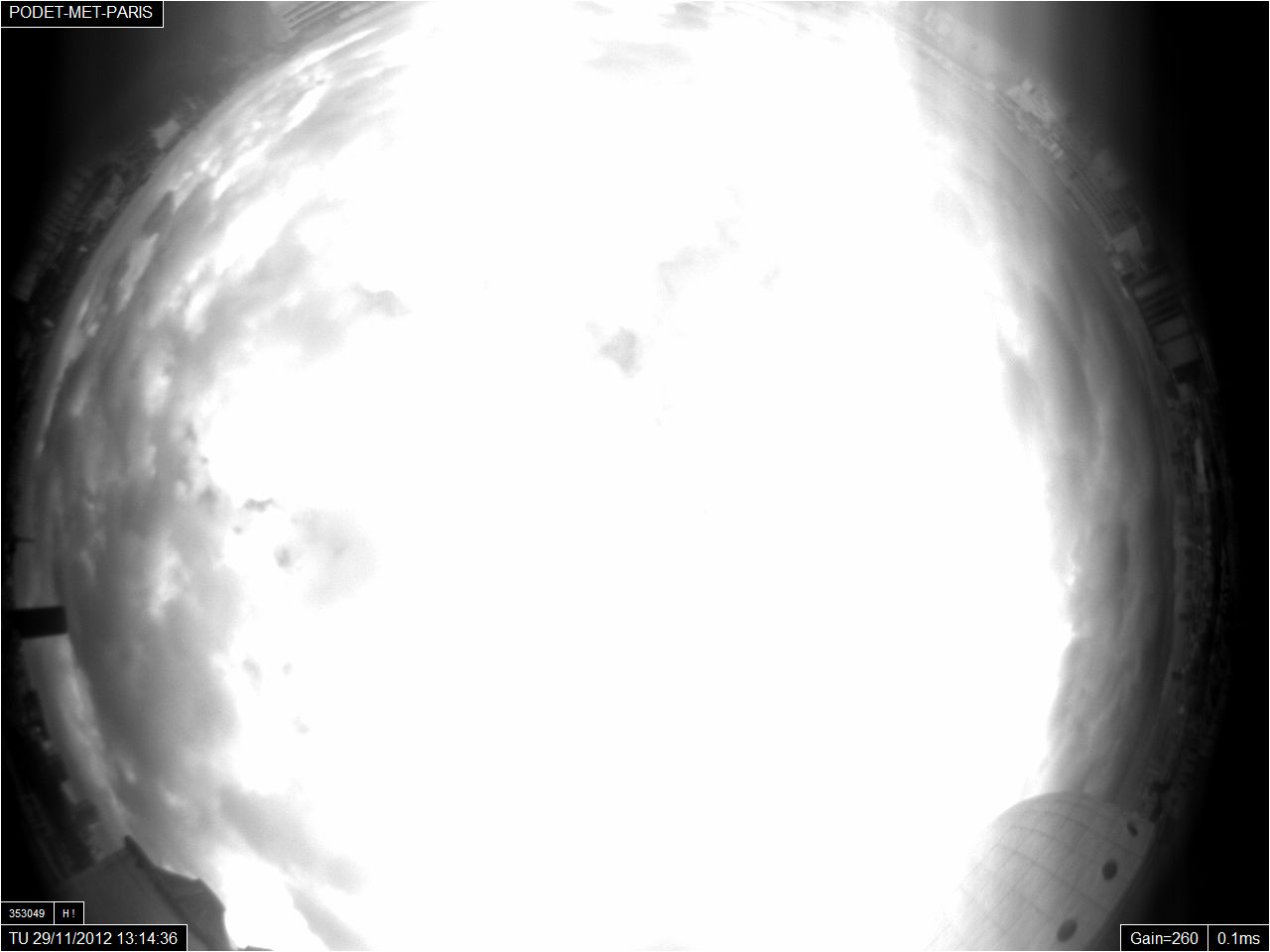
The above picture shows the bright but evanescent streak which appeared in the Parisian sky. The event was also recorded by the automatic amateur cameras of the French network of meteorite observers. Furthermore, local police received reports of naked eye observations of the same phenomenon. The exact path and orbit of this celestial body as it entered the atmosphere have not yet been calculated. Nevertheless, this observation highlights the importance of setting up a dense network of specialized cameras for the sole purpose of detecting and tracking such “shooting star” events. The data will enable scientists to calculate the exact point where the incoming objects will impact the terrestrial surface. The Institute of Celestial Mechanics (l’Institut de Mécanique Céleste et de Calcul des Éphémérides IMCCE(1) ) of the Paris Observatory is currently studying how best to implement such a facility. The project has been baptised « Fireball Recovery and Inter Planetary Observation Network – FRIPON » ; it should help answer a question that has aways bedevilled Man : where do meteorites come from ?
This work has received the support of the Ville de Paris and the scientific council of the Paris Observatory. It is being carried out by the IMCCEE, with the help of the “laboratoire Galaxies, Etoiles, Physique et Instrumentation” –the GEPI 2 – of the Paris Observatory.
Webcams : the sky-live !
Thanks to our wide field cameras, you can see, 24 hours a day, 7 days a week, what the sky looks like seen from Paris and also from the Pic-du-Midi.
The sky as seen from the Paris Observatory

The sky as seen from the Pic-du-Midi Observatory (Pyrénées)

To know more
– About the obserevational network for interplanetary material and about fireball research (Fireball Recovery and Inter Planetary Observation Network FRIPON, in English)
– About the French meteor observation network
Contact scientist
– Jérémie Vaubaillon
Astronome adjoint
IMCCE
01 40 51 22 66
1 The « Institut de Mécanique Céleste et de Calcul des Éphémérides IMCCE » is a research department of the Paris Observatory, and also a « laboratoire
associé » of the CNRS, at Lille University Lille-1 and at the Pierre et Marie Curie University.
2 The « Laboratoire Galaxies, Etoiles, Physique et Instrumentation » is a research department of the Paris Observatory, and also a « laboratoire
associé » of the CNRS and the Paris Diderot University.
